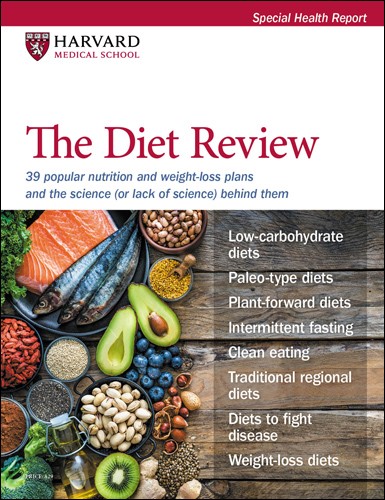Quick-start guide to nuts and seeds
Tiny but mighty, nuts and seeds deliver a protein, fiber, and nutrient punch with every bite.
- Reviewed by Howard E. LeWine, MD, Chief Medical Editor, Harvard Health Publishing; Editorial Advisory Board Member, Harvard Health Publishing
Nuts
Nuts are actually the seeds of plants. Most are the seeds of trees; peanuts, however, are the seeds of a legume.
Many, including walnuts and cashews, grow inside leathery fruits, with the nut corresponding to the peach pit (also a seed) within a peach. Others, such as hazelnuts and chestnuts, are classified as true botanical nuts (hard, dry fruits that don't open to release a separate seed).
The benefits: Nuts are flavorful little packages containing healthy unsaturated fats (see "Fat and calorie content per ounce of selected nuts and seeds"), protein, fiber, and other nutrients. For example, peanuts and pecans contain lots of B vitamins; almonds are rich in calcium and vitamin E; walnuts have lots of folate, vitamin E, and alpha-linoleic acid (ALA, an omega-3 fatty acid). And all nuts have magnesium.
"In just a handful of nuts, which is about an ounce or a quarter of a cup, you get a lot of bang for the buck. They contain anywhere from 3 to 7 grams of protein per ounce, 1 to 3 grams of fiber, and 160 to 200 calories," says registered dietitian Kathy McManus, director of the Department of Nutrition at Harvard-affiliated Brigham and Women's Hospital.
The risks: "If you eat more than one or two handfuls of nuts per day, you're adding extra calories — maybe too many — that can take the place of other healthy foods and add weight," McManus warns. She also advises that you stay away from buying nuts with added sugar or chocolate. "But salted nuts are fine, if you eat less than an ounce," she says. "For 1 ounce of most nuts, the sodium content is less than 100 milligrams."
Try these: Almonds, Brazil nuts, cashews, hazelnuts, peanuts, pecans, pistachios, pine nuts, and walnuts.
Fat and calorie content per ounce of selected nuts and seeds |
|||
|
Nut or seed |
Calories per ounce |
Saturated fat (grams) |
Unsaturated fat (grams) |
|
Almonds |
160 |
1 |
12.5 |
|
Cashews |
160 |
2 |
10 |
|
Chia seeds |
140 |
7 |
|
|
Peanuts (raw) |
160 |
2 |
11 |
|
Sunflower seeds |
165 |
1.5 |
12 |
|
Walnuts |
185 |
2 |
16 |
|
Source: USDA Food Composition Databases. |
|||
Seeds
Unlike the seeds we call nuts, culinary seeds come from vegetables (such as pumpkins), flowers (such as sunflowers), or crops grown for a variety of uses (such as flax or hemp).
The benefits: "Seeds have mostly healthy fats, some fiber, and about 150 calories per ounce. And they do have protein, about 5 to 9 grams per ounce," McManus notes. "Flaxseeds and chia seeds are also good sources of plant-based omega-3 fatty acids, with two or three times the ALA of walnuts."
Just a tablespoon of seeds yields surprising nutrition. In chia seeds, for example, you'll get 2 grams of protein, 4 grams of fiber, and 78 milligrams of calcium. A tablespoon of flaxseed has 2 grams of protein and 3 grams of fiber. Hemp seeds contain only 1 gram of fiber in a tablespoon, but 10 grams of protein.
The risks: Doctors once believed that eating seeds could lead to diverticulitis, an infection of diverticula (pouchlike structures that sometimes form in the muscular wall of the colon and bulge outward). However, the link between diverticulitis and seed consumption is unproven. In fact, seeds are rich in fiber, which is crucial for gut health.
Try these: Chia seeds, flaxseeds, hemp seeds, pumpkin seeds, sesame seeds, and sunflower seeds.
How to use them
Adding nuts and seeds to your diet is simple: stay within the serving guidelines of an ounce or two per day, and eat the ones you like. Sprinkle a few into salads, sauces, vegetables, or whole grains such as brown rice or quinoa.
"Make a cashew or pine nut pesto," suggests McManus. "Add nuts or seeds to hot cereal or yogurt. Put nuts and seeds in a stir-fry. Or include some nut flour in baking recipes."
No matter how you enjoy them, you'll wind up with extra flavor and texture in meals and the added benefits of better nutrition.
About the Reviewer

Howard E. LeWine, MD, Chief Medical Editor, Harvard Health Publishing; Editorial Advisory Board Member, Harvard Health Publishing
Disclaimer:
As a service to our readers, Harvard Health Publishing provides access to our library of archived content. Please note the date of last review or update on all articles.
No content on this site, regardless of date, should ever be used as a substitute for direct medical advice from your doctor or other qualified clinician.













